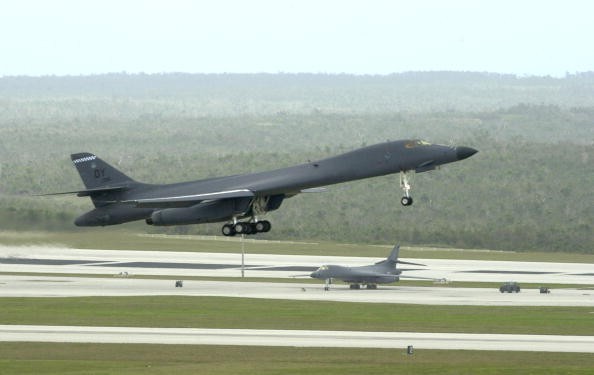China has put Guam in its missile range as part of its extensive efforts to neutralize the ability of the United States to help its allies in the Asia-Pacific Region, Defense News reported.
According to a report issued by the U.S.-China Economic and Security Review Commission (USCC), neutralizing the U.S. territory "makes perfect sense from a Chinese military perspective."
Guam hosts two American military facilities--the Andersen Air Force Base and the Apra Naval Base--with a combined personnel of 6,000. Additionally, the island supports the rotations B-1, B-2 and B-52 bomber aircraft and F-15, F-16, and F-22 fighter aircraft.
Guam's storage facilities also have 100,000 bombs and 66 million gallons of aviation fuel.
For USCC policy analyst and report's author Jordan Wilson, the move puts the bases and assets in Guam at risk.
He explained: "Besides potentially depriving the United States of specific strike assets, such attacks could disrupt its region-wide response effort--closing runways, reducing aerial and naval basing capacity, complicating the operating environment for U.S. ships, and shutting down key logistics and repair infrastructure."
Wilson particularly mentioned the new DF-26 IRBM that China has paraded for the first time during the Beijing military parade in Sept. 2015. The missile can strike aircraft carriers in Guam's surrounding areas.
Dubbed as the "Guam Killer" and "Guam Express," the missile has a 3,000- to 4,000-kilometer range and is equipped with anti-ship, nuclear and conventional variants.
The missile's "modular design" also permits interchangeability where the launch vehicle can be filled with "two types of nuclear warhead and several types of conventional warhead which use different destructive mechanisms to attack specific targets," Wilson pointed out.
Apart from this, the policy analyst also stressed the vital role cruise missiles play in holding Guam at risk. These missiles include the air-launched ACMs, the supersonic YJ-12 ASCM, the new YJ-18 ASCM and the unidentified sea-launched LACM.
These technologies are capable of doing simulated attack on Guam and of posing massive challenges for the island's shipboard defenses. The YJ-12 was also once described as "the most dangerous anti-ship missile China has produced thus far."



























